In 2013, the TV series "Legend of Lu Zhen" hit the air, and the story of Lu Zhen's promotion from an ordinary palace maid to a high-level female official attracted many people's attention. Are you also curious about the history of ancient Chinese female officials? Let's talk about it today.
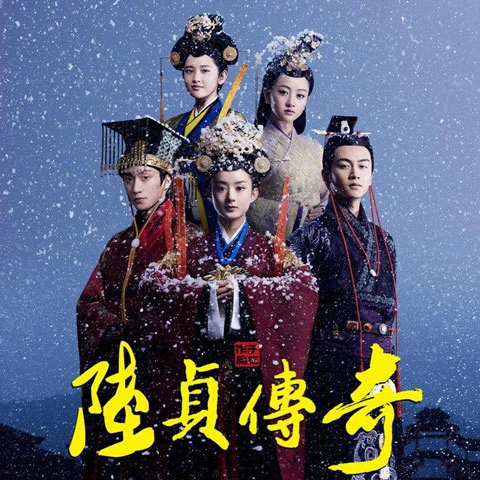
Legend of Lu Zhen
Pre-Zhou Dynasty
Women were already involved in political activities as early as the pre-Zhou Dynasty. The Classic of Poetry records that a significant leader of the Zhou family, King Tai of Zhou, who coordinated the move of the capital, and his wife, Tai Jiang (太姜), who was responsible for surveying the location of the new capital.
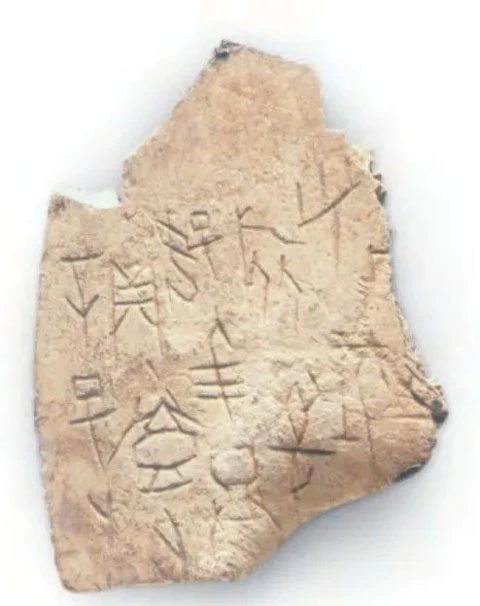
The oracle bone record of Fu Hao leading three thousand troops to invade Qiang
The wife of Wu Ding (武丁, Shang dynasty King), Fuhao (妇好), also had an outstanding performance in the activities of the outer court. According to historical records, she once led 3,000 troops to conquer the Qiang (羌) and returned with complete victory. It was the highest number and scale of military campaigns in the current oracle bone recorded during the reign of Wu Ding.
Zhou Dynasty
The Western Zhou Dynasty was the earliest period in which the texts related to "female officials" were recorded in the existing testable materials. According to the records of the Rites of Zhou, female officials were divided into two categories: "female officials with noble titles" and "female commoners who served in the ministry." Among them, the titled female officials can be further divided into:
- Jiu Pin (九嫔)
- Shi Fu (世妇)
- Nu Yu (女御)
- the inner sects (内宗)
- the outer sects (外宗)
The female commoners other than the nobles, including:
- Nu Zhu (女祝)
- Nu Shi (女史)
- Nu Tiao (女祧)
- Nu Fu (女府)
- Nu Wu (女巫)
- Nu Jiu (女酒)
Later, as the "Jun (君)" who leads the female officials, it has the same meaning as Zhou Emperor's first-class title, so it is not included in the female official system. But it still has a series of significant responsibilities.
Wang Jiang (王姜), the wife of King Zhou Kang, accompanied on expeditions, received envoys, took charge of the royal family's economic affairs, and presided over the royal family's banquets, ceremonies, and other ceremonial activities. Wang Qi, the wife of King Zhou Zhao, also accompanied the king on his expeditions and participated in the war.
The Western Zhou Dynasty also set up an assessment system for female officials, training female officials accordingly, and recording their achievements and performance as a basis for their future evaluation. At the same time, the government also regularly inspects the work done and the products produced by female officials. When the quality and quantity of the items are evaluated, the rulers will reward and punish the female officials in office.
Regrettably, in the late Zhou period, the original system of female officials was dismantled high-level female officials became a nominal position, and the low-level female officials were removed.
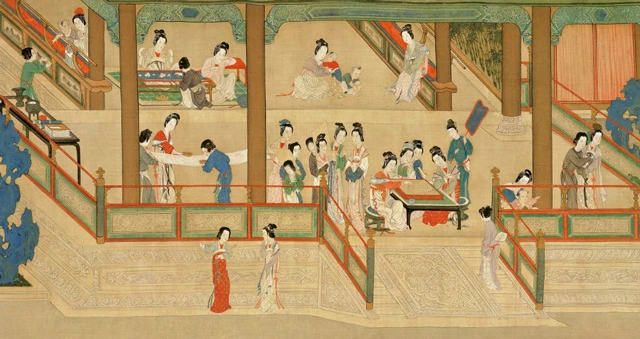
Spring morning in the Han Palace
Qin Dynasty
The harem system first appeared during the Qin period. Except for the queen, other concubines were divided into eight classes, initially establishing the harem hierarchy. However, there was no intrinsical strict hierarchical division or clear work division within it.
During the period of Emperor Wu and Emperor Yuan of the Western Han Dynasty, the concubine rank expanded to 14 levels based on the Qin harem hierarchy. However, there were very few independent female officials who were mostly concubines.
During the Eastern Han Dynasty, "Nu Shi (女史)" was included among the female officials, and they were responsible for keeping records of the emperor's and empress's lives.
Wei, Jin, and North-South dynasties
During the Cao Wei period of the Three Kingdoms, the post of "Female Minister" was added, requiring the incumbent to have a certain cultural accomplishment.
During the Northern Wei Dynasty, Wang Sengnan was confiscated into the palace when he was six because his father had broken the law. At ten, she was appointed as a "Gong Xue Sheng (a reserve choice for female officials)" and finally selected as a female minister by virtue of her wisdom and sensitivity.
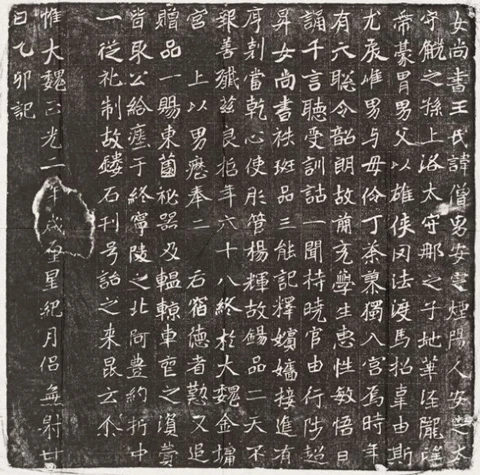
Northern Wei Dynasty - "Epitaph of Wang Sengnan" - Topography
It was also in the Northern Wei Dynasty, according to the Rites of Zhou, and the establishment of female officials in the Qin and Han Dynasties, Emperor Xiaowen set up female posts to regulate internal affairs. It was the first time to separate the female officials from the concubines, set up an independent system, and formally establish the name and rank of female officials, refining their powers, responsibilities, and status in the harem. From then on, the system of female officials in the harem was clarified.
Sui Dynasty
Although the scale of the harem in the Sui Dynasty expanded considerably, it was still based on the Zhou system. During the region of Emperor Wen of the Sui Dynasty, the inner court set up "Liu Shang (六尚)" female officials, a total of 27 people, and the level of the official position is rank 9, upper grade.
After Emperor Yang of Sui succeeded to the throne, he further improved the system of female officials and formed the institutional regulation of six bureaus and twenty-four divisions. The official rank of female officials was upgraded from the original rank of ninth to the rank of fifth.
- Shanggong Bureau (尚宫局): responsible for assisting the empress and the inner court with endowment matters;
- Shangyi Bureau (尚仪局): responsible for the teaching of etiquette;
- Shangfu Bureau (尚服局): responsible for the clothing for the court;
- Shangshi Bureau (尚食局): responsible for the meals for the concubines;
- Shangqin Bureau (尚寝局): responsible for the emperor's bedroom and the order of concubines' service to the emperor;
- Shanggong Bureau (尚工局): responsible for the inner court female workers.
Tang Dynasty
During the Tang Dynasty, female officials were divided into inner officials (concubines) and palace officials (maidservants). The system of palace officials was still divided into "Liu Shang" which was followed by the Sui system. In addition, the Tang dynasty also established the posts of Gong Zheng (宫正), Si Zheng (司正), and Dian Zheng (典正). Gongzheng was in charge of precepts, rituals, banishment, and punishment, while Sizheng and Dianzheng were subordinates and assisted work.
The most famous female official in the Tang Dynasty was undoubted Shangguan Wan'er (上官婉儿).
In the first year of Linde (664), Shangguan Wan'er's grandfather Shangguan Yi was imprisoned and executed for offending Wu Zetian. As a result, she was sent to the palace as a maid. Dramatically, Shangguan Wan'er grew up to be highly appreciated by Wu Zetian and became the head of the imperial court.
After the reign of Emperor Zhongzong, Wan'er was appointed as a female official. She often wrote poems on behalf of the emperor with other ministers at banquets. She also commented on the poems written by the ministers and gave them golden glasses, so that "extravagance become popular among the courtiers of the court". Later, after the defeat of Empress Wei, Wan Er was also been executed.
Song Dynasty
During the Song Dynasty, the system of female officials was divided into six different departments and twenty-four officials who are responsible for different jobs. The system belongs to the Shang Shu Sheng (尚书省, Department of State Affairs) of the palace.
Ming Dynasty
In 1328, Zhu Yuanzhang established the Ming Dynasty, and in 1373, the Ming Dynasty formally arranged for the establishment of female officials. Based on the Han and Tang systems, Zhu Yuanzhang simplified the system of female officials and reorganized it into the basic structure of "six bureaus and one official". In terms of selection, the Hongwu period seems to have favored the appointment of middle-aged women as female officials, not limited to unmarried or widowed, but requiring that they be husbandless.
In addition to folk women who could be elected as female officials, court ladies within the palace could also be educated and promoted to female officials.
In the Ming period, female officials were mainly responsible for the inner palace etiquette, precepts, finance, record history and food and clothing supply, and other internal court affairs. Female officials generally into the palace for five or six years of service, then returned to their homes. Elderly female officials can also stay in the palace depending on their wishes. The female official's family enjoys the imperial stipend.
At that time, there was a female official Chen Shi (陈氏). She had worked hard in the palace for a long time. After returning home, the court still provided grains to support her family. Later, when Zhu Di ascended the throne, he recalled her to her former position because she was "familiar with allusions". In the fourth year of Yongle, Chen was forty years old and died in the palace.
After the Yongle period, the power of eunuchs increased, and female officials were constantly restricted.
Qing Dynasty
In the Qing Dynasty, the system of female officials gradually died out in the stage of history. Shunzhi period had proposed to follow the Ming Dynasty's system to set up female officials. However, it was eventually opposed by the court officials as it was not in line with the old Manchurian customs and failed to implement.
Kangxi period, almost all the work of the inner court to the Imperial Household Department to deal with the value of the establishment of the system of female officials, therefore tends to be more minimal. In addition, the separation structure of female officials and concubines, which began in the reign of Emperor Xiaowen, was confused again in the Qing Dynasty, and the independence of female officials no longer existed.
But in the Qing dynasty, there will occasionally be temporary female officials in some significant ceremonies. Since the Qing Dynasty was the majority marriage of aristocratic families, so the selection of female officials, was usually based on the status of the husband determined the position of female officials high and low, and work content. For example, compared to the wives of princes, the wives of the Imperial Household Department are responsible for more fragmented and piecemeal work. At the same time, Feng Shui issues such as "compatibility" were also important considerations when selecting female officials.
The evolution of female officials has gone through a long history, from participating in political affairs in the outer court many times to being limited to the inner court, from being confused with concubines to having an independent system and then confused again.
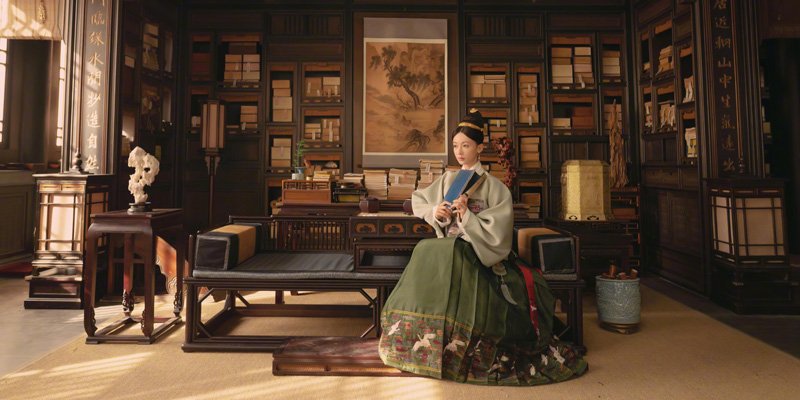
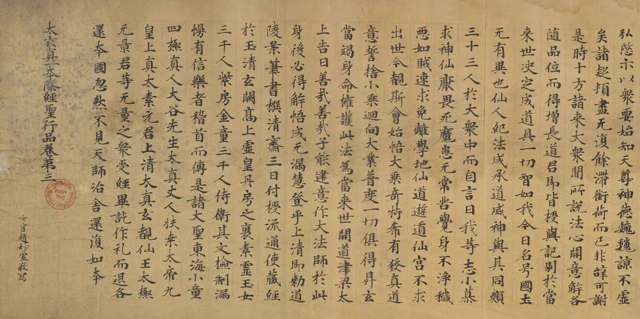
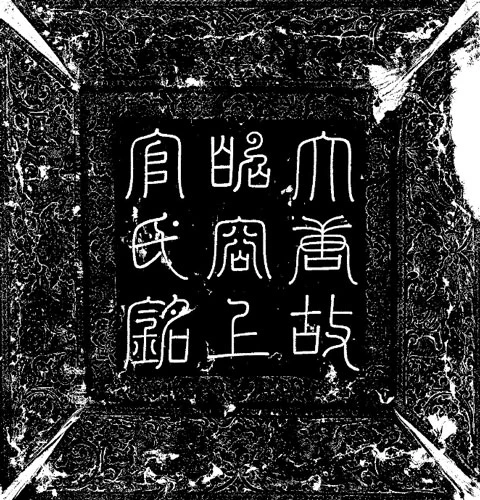
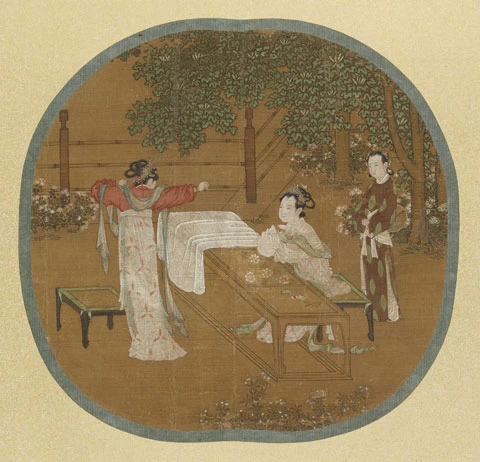
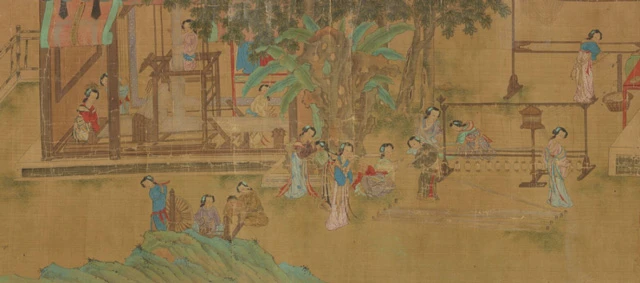
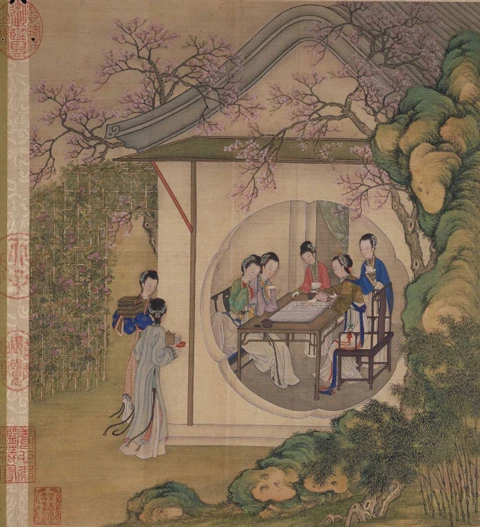


😍😍😍
Sejak zaman dulu wanita sudah berkarir, kalau diindonesia dulu adalah tabu, hingga RA Kartini mengubah segalanya
Terimakasih artikelnya